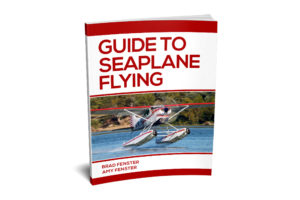Landing Amphibians on Land
Landing an amphibian on the runway is quite similar to landing a retractable gear landplane. Like a landplane, the gear position is a primary concern. The gear position should be checked prior to landing and its position reconfirmed on final. In addition, there are a few other considerations.
- As the nose wheels are not as strong as the main wheels, they should be kept off the runway as long as possible.
- Aerodynamic braking should be used whenever possible. Unless it is a safety issue, the brakes should be used sparingly to save on maintenance costs.
- Pilots new to amphibians tend to flare too late as amphibians sit much higher off the ground than most other general aviation aircraft.
- Amphibians usually cannot handle as much crosswind, as there is more surface area on the floats. The pilot must know the aircrafts crosswind limitations. If the crosswind limit is exceeded, another runway should be used or a water landing conducted instead (into the wind). Amphibians have decreased crosswind capabilities because the floats provide more surface area that is affected by the wind. As the amphibian slows down to taxi speed, crosswinds may physically push the nose as there is little friction provided by the caster wheels, unlike the nosewheel in a tricycle gear landplane.

